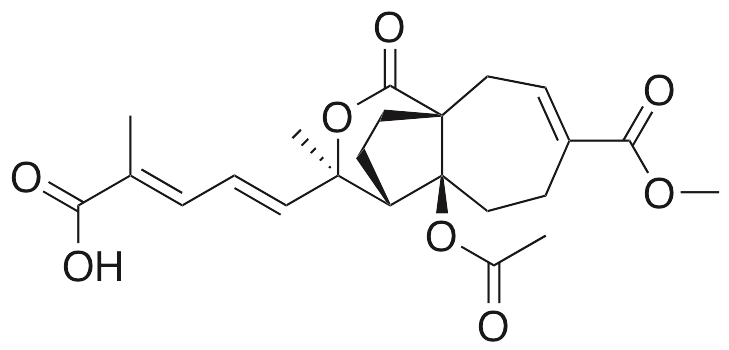Description
Psuedolaric acid B (PAB) is a diterpene acid found in the root bark and trunk bark of Pseudolarix kaempferi. PAB exhibits anticancer chemotherapeutic, immunosuppressive, anti-angiogenic, anti-inflammatory, and antifungal activities in a variety of models. In vitro, PAB activates caspases 3 and 9, upregulates Bax and Bad, and downregulates Bcl-2 and Bcl-xl, inducing apoptosis. PAB also increases PKC activity, inducing cell cycle arrest, autophagy, and senescence in cancer cell lines. In other models, PAB competitively inhibits tubulin assembly, preventing formation of mitotic spindles and microtubule polymerization. In animal models with tumor xenografts, this compound decreases tumor weight. Additionally, PAB downregulates expression of pro-angiogenic factors such as VEGF, HIF-1α, and cyclin E. PAB decreases IL-2 production by T cells and inhibits T cell proliferation in vitro. This compound also inhibits translocation of NF-κB and expression of cyclooxygenase (COX-2), decreasing production of prostaglandin E2 (PGE2). PAB displays antifungal activity against a variety of fungi both in vitro and in vivo.
